BILLY CLARK
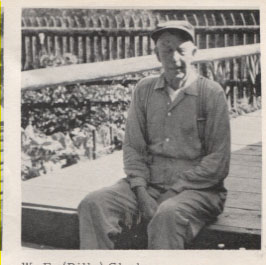
I have long been amazed at the spirit of adventure displayed by English settlers in areas far from their natural habitat. The chronicles of our province are laced with stories of bachelor characters from the old country that happily settled into some of the wildest lands on earth. Some of these places are still pretty wild and far from the beaten path of contemporary Canadians.
One of these characters was Billy Clark. He left his home in Guildford, Surrey in 1907 at age twenty to journey to the Lardeau region of southeastern BC. This area is located just north of Kootenay Lake and to this day is still remote and wild with settlement just beginning to return and edge in as other areas in the province become too highly settled for some people. But first he stopped in Saskatchewan to visit his sister where he might have stayed until he learned that she had wires out to the outhouse, barn and chicken house. The were installed to keep people from getting lost in blizzards and freezing solid in minus 64 temperatures.
What drew Billy to Duncan Lake is uncertain but I suspect the glowing accounts of the fruit growing potential had something to do with it. These accounts were available in UK publications and the US. There had been a storm of mining activity in the 1890’s. Most of the activity was in the Lardeau Valley where several towns sprung up. Ferguson, Trout Lake City, Poplar Creek and Goldhill boomed for awhile as did Howser (Duncan City) and Healy’s Landing in the Duncan Valley. Howser was said to have 4000 people with a store, school and steamer landing. By 1904, the boom was pretty well over but more serious folk had settled in. These included Billy and fellow Englishmen like Charlie Malloch, Tim Ainsworth and others who attempted to farm and grow fruit. One of the first places they tried was near the outlet of Duncan Lake. They were able to grow apples and supply the miners
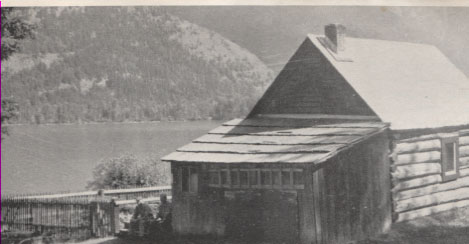
Billy’s cabin at Howser
still working in the Lardeau. They also trapped, logged and did whatever they could to keep themselves going. The fruit business didn’t last long and when I worked in the Lardeau for the Fish and Wildlife Branch in the 1960’s we used to hunt grouse on the big riparian flat where the farms were. An old railroad grade ran from near Argenta to the bottom of Duncan Lake provided access. This was an old Great Northern Grade but it was abandoned and left to the grouse and deer.
Another ranch was developed by the Hincks Brothers further up the lake. They raised cattle and built two large houses surrounded by flower beds and rock gardens. When the Great War broke out the Brothers returned to England and left the property in the care of Billy Clark. The widow of Tom Hincks returned after the war with her sons but the life didn’t suit them and they left the place to the bush. Several miles above the Hincks Ranch, the Matthews Brothers tried their luck. A bear killed one of the brothers and the other died from blood poisoning. Later on, Doctor Besecker of Woodbury Creek raised sheep on the east side of Duncan Lake. My cousin John Burns worked there and reports that the sheep had to be in the barn at night because of possible grizzly predation.
Because of the decline after the war, Billy Clark moved into Howser which was now almost deserted. His companions had gone off to the war never to return. He built a trim log house and a boat house and settled in. He worked at various mines and logged at times. In the winter, he trapped. He always was a prospector and he and his friend, Joe Gallo discovered a vein of lead and zinc which they sold to Cominco (now Teck) which became their Duncan Lake Mine. When he grew older Billy began making snowshoes for trappers and outdoorsmen in the region which was famous for very heavy snow. My father and I visited Billy at Howser in the 1950’s shortly after the road between Kaslo and Lardo was improved. He was glad to have company and took us down to his boathouse where he fed his breakfast porridge to the fish that frequented the boathouse. It was like feeding time in a hatchery and he was very proud to show us how he got along with his neighbours.
But all great things must come to an end (or so we are told). The Columbia River Treaty and power and flood control demands in the US ended it for Billy. “I will be drowned out like a gopher” he said. The Duncan Dam was completed in 1967 and his place was flooded out along with the creatures and forests around him. The government of the day bragged how they had tamed the wilderness, created a beautiful lake and hoodwinked the Americans in the process.
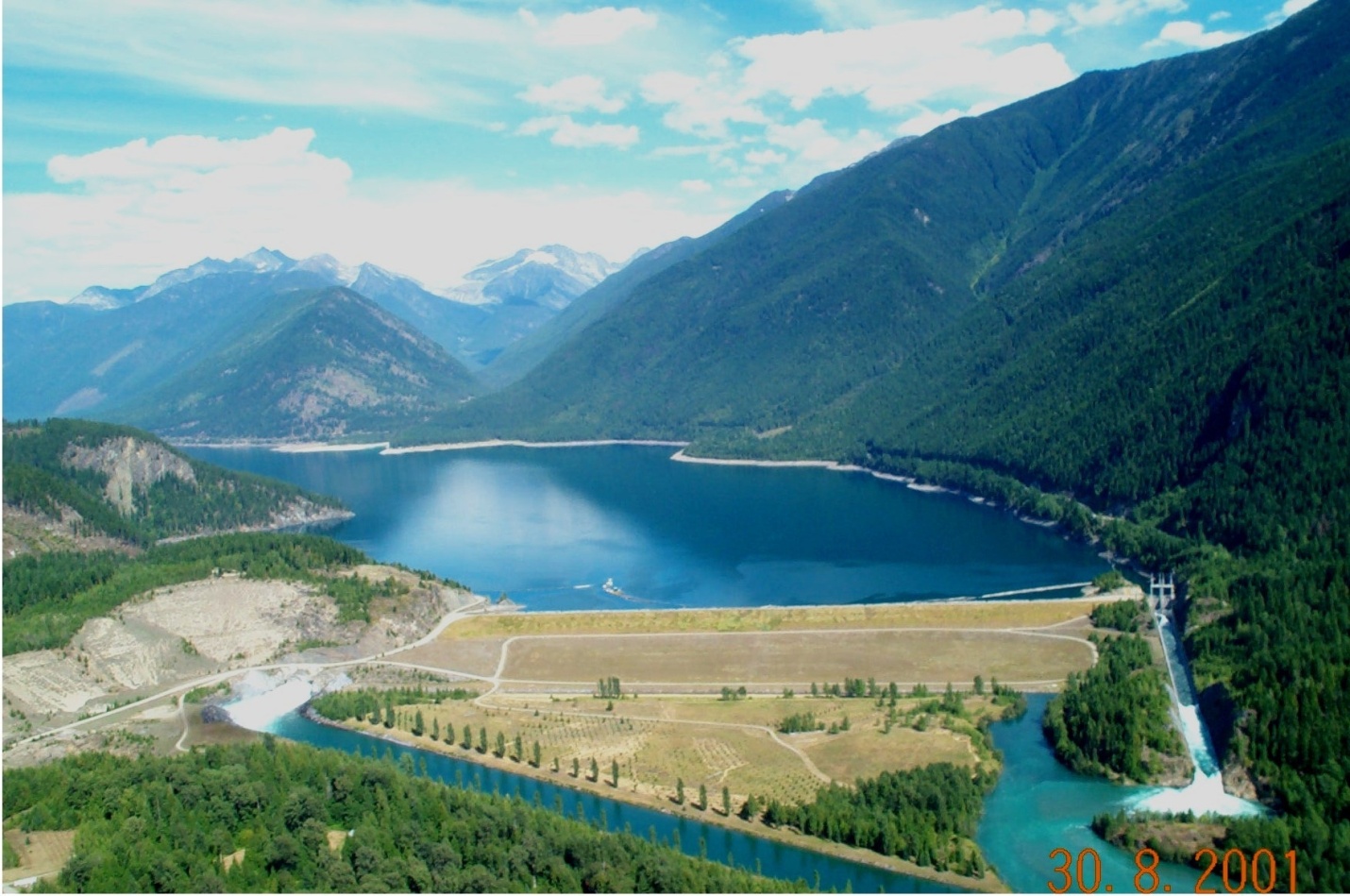
This is the way Duncan Reservoir looks today. But the basin was left uncleared for a number of years
I am so sorry Billy.
Ted Burns. With input from an Elsie Turnbull story in BC Digest, April 1965.
January 20/2021
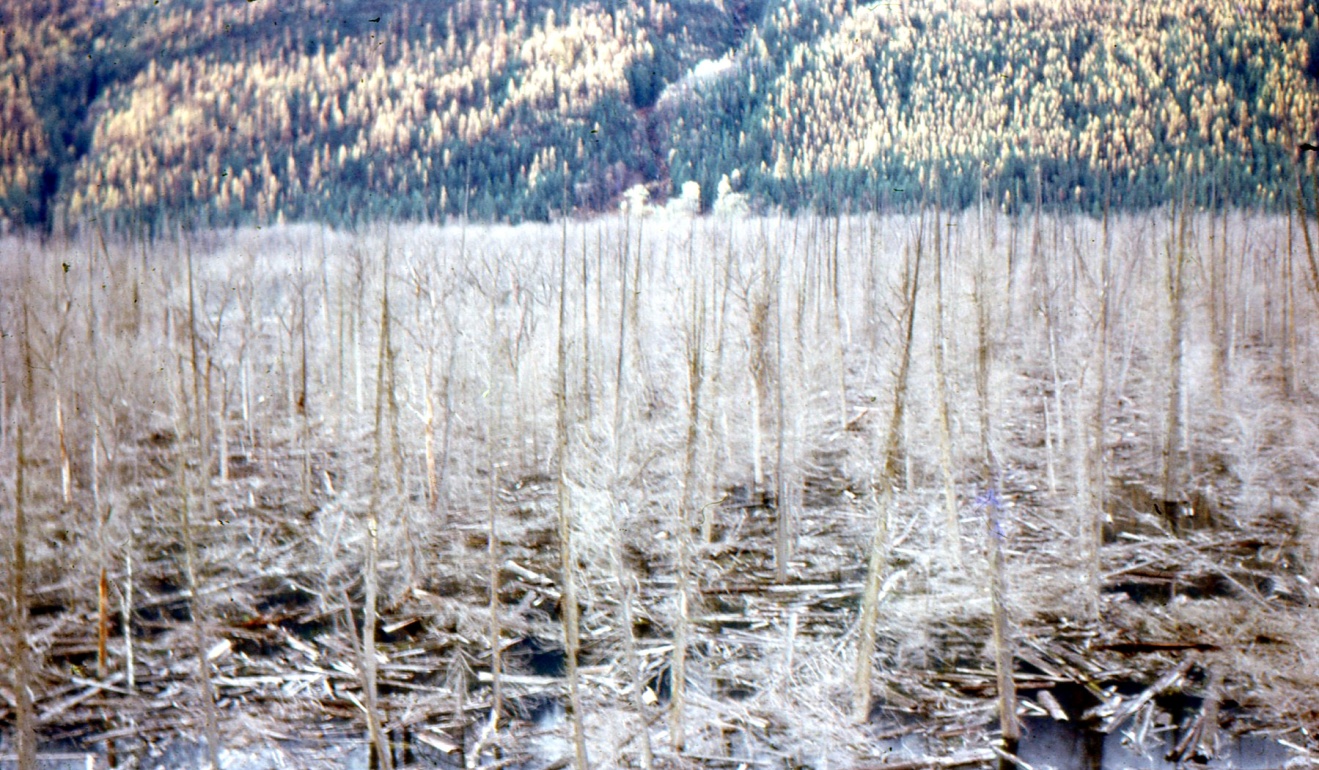
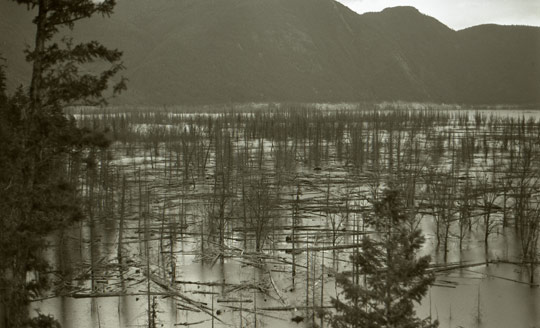
Tags: tame the wilderness?